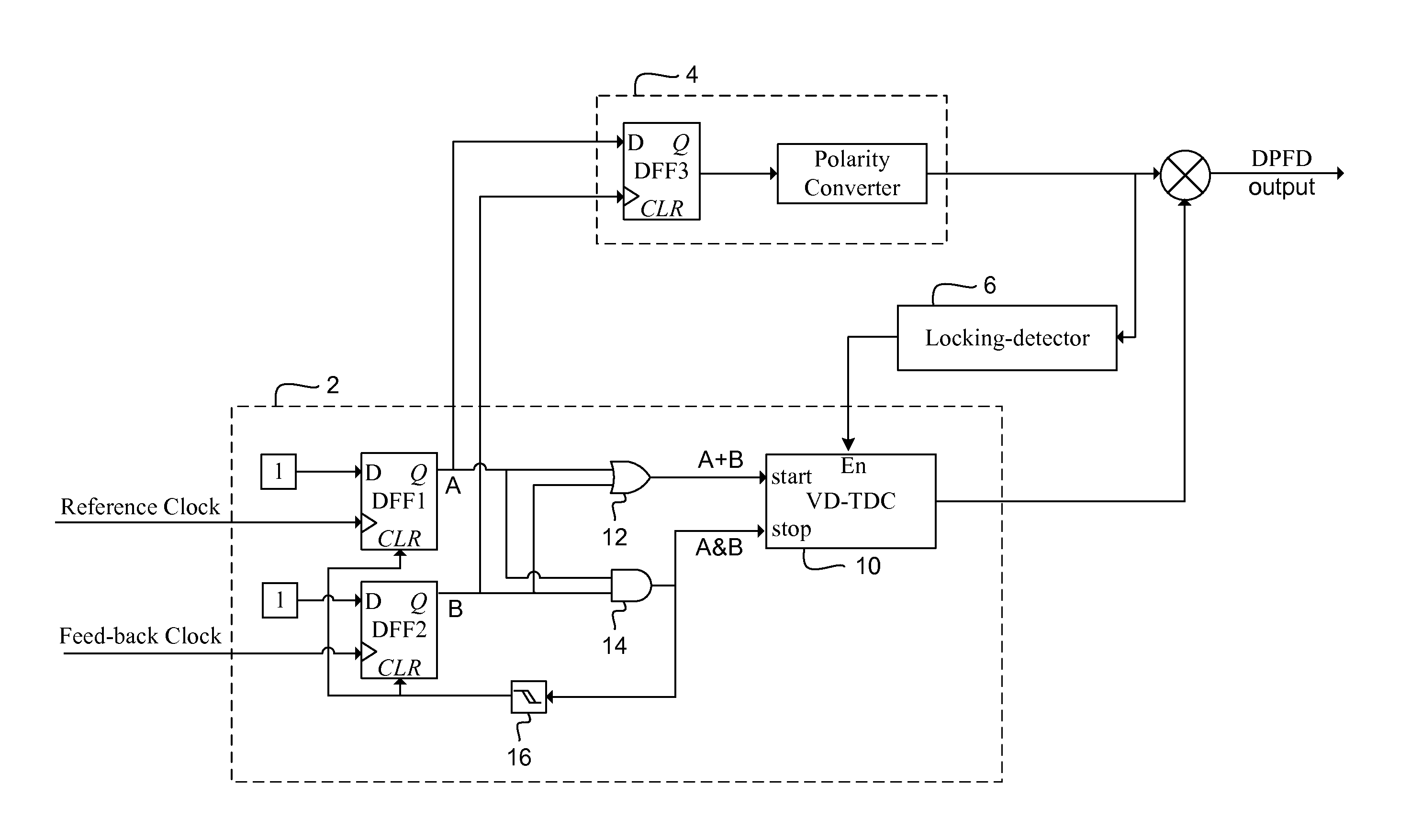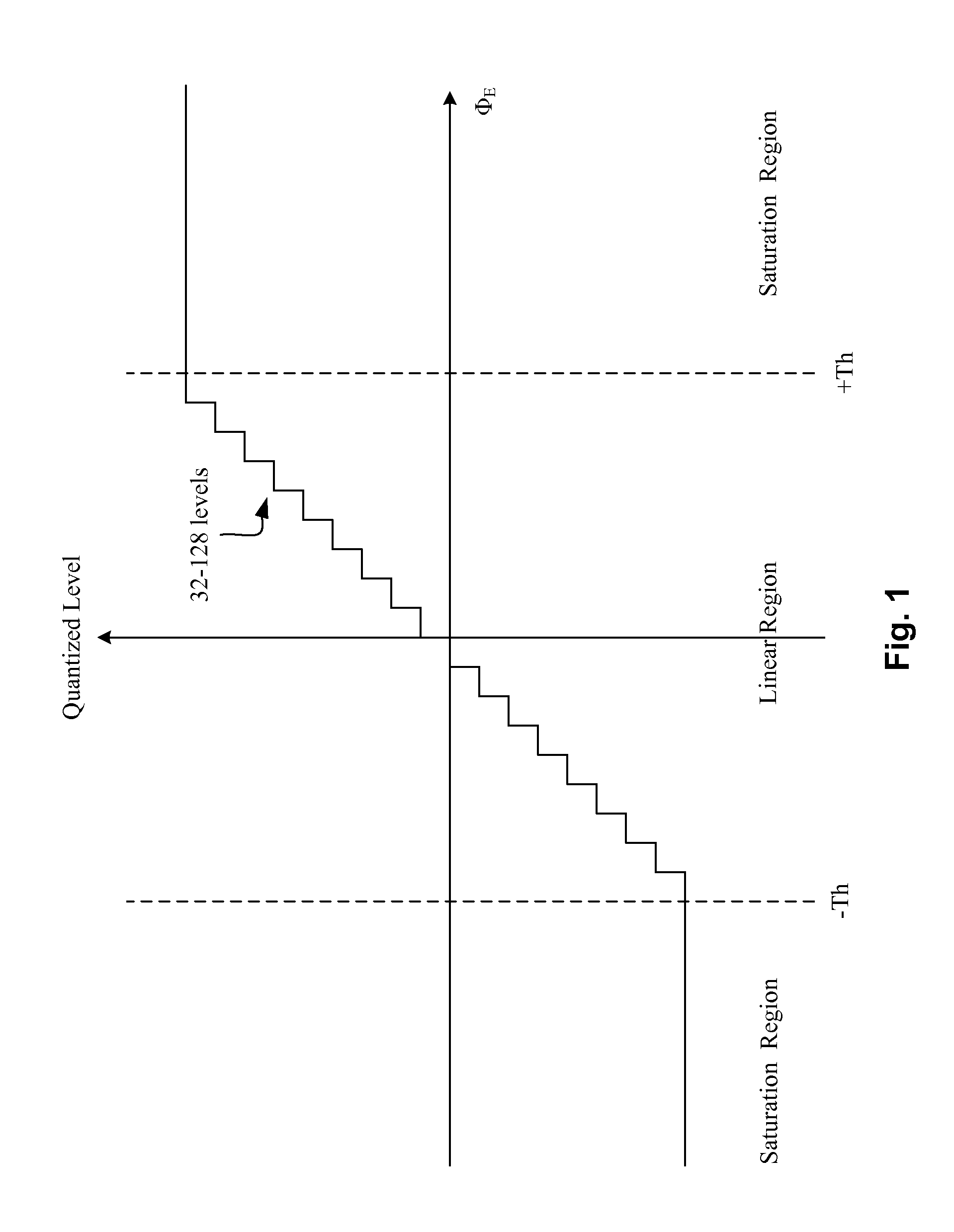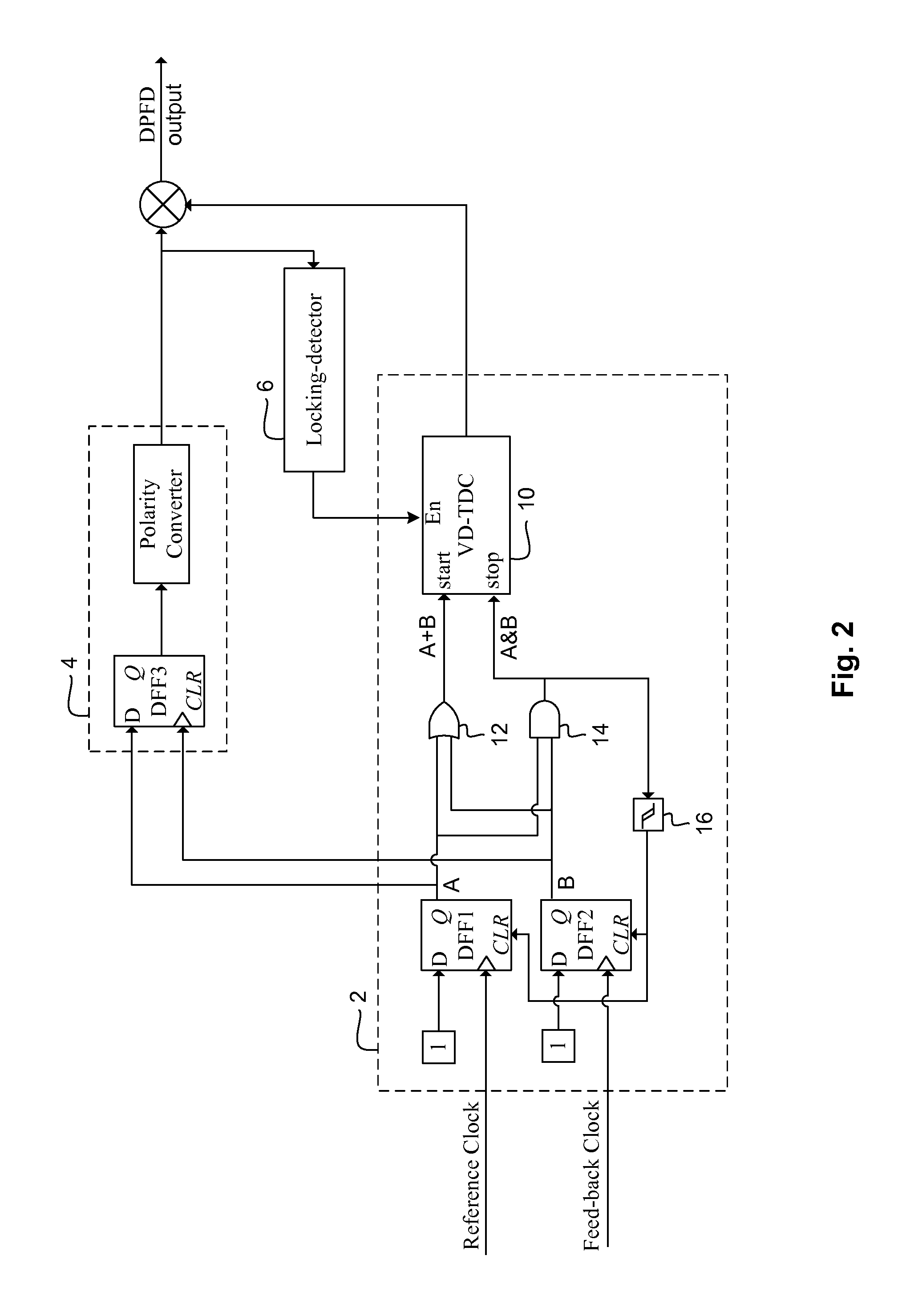Digital phase and frequency detector
- Summary
- Abstract
- Description
- Claims
- Application Information
AI Technical Summary
Benefits of technology
Problems solved by technology
Method used
Image
Examples
Embodiment Construction
FIG. 1 illustrates a transfer curve for a digital phase and frequency detector of the present invention. A digital phase and frequency detector (“DPFD”) of the present invention can have at least two operating modes, including a linear operating mode and a saturation operating mode. In the linear operating mode, the DPFD outputs a quantized level to represent both the polarity and magnitude of the input phase error, ΦE, between a first input signal, e.g. a reference clock, and a second input signal, e.g. a feedback clock. In the saturation operating mode, the DPFD outputs a maximum constant level to represent the polarity of the input phase error between the first input signal and the second input signal. A transfer curve can be used to represent the quantized levels of the digital phase and frequency detector as a function of the input phase error of the two signals. Furthermore, the transfer curve can have a saturation region where the DPFD is in a saturation operating mode and a ...
PUM
 Login to View More
Login to View More Abstract
Description
Claims
Application Information
 Login to View More
Login to View More - R&D
- Intellectual Property
- Life Sciences
- Materials
- Tech Scout
- Unparalleled Data Quality
- Higher Quality Content
- 60% Fewer Hallucinations
Browse by: Latest US Patents, China's latest patents, Technical Efficacy Thesaurus, Application Domain, Technology Topic, Popular Technical Reports.
© 2025 PatSnap. All rights reserved.Legal|Privacy policy|Modern Slavery Act Transparency Statement|Sitemap|About US| Contact US: help@patsnap.com



